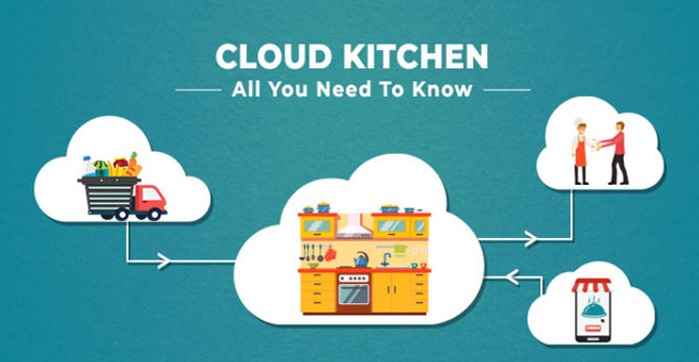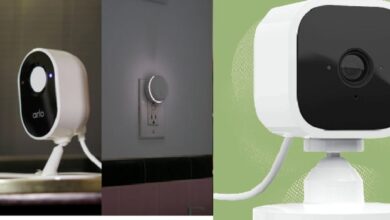
User now use the cloud kitchen to store our images, watch movies, and even operate our businesses. And, whether we recognise it or not, it’s increasingly where we’re placing our meal orders.
Introducing cloud kitchens, commercial kitchens designed particularly to prepare food for delivery. These commissary kitchens are also referred to as “ghost kitchens,” “shared kitchens,” or “virtual kitchens,” and the delivery-only food brands that operate within them are referred to as “virtual restaurants.”

“This is nothing new,” you may be thinking, and you are correct in some ways. For decades, Chinese eateries have made the most of delivery. And the pizza industry has essentially built its entire business model around delivery optimization. However, technological advancements and changes in customer habits have recently made switching to a delivery-only model conceivable. In terms of delivery, it has various benefits over traditional brick-and-mortar eateries.
Read Also:
In the cloud kitchen model, where does The Food Corridor fit?
Food entrepreneurs who want to open a virtual restaurant or a commissary kitchen have more options than ever before. We know a little something about commercial kitchens and the food businesses that operate within them here at The Food Corridor. Users were willing to aid more than 150 clients adapt their shared kitchens to reap the benefits of this competitive marketplace by watching this trend.
Users are also observed that food business owners are increasingly looking for commercial kitchen space to introduce their own digital food and beverage concepts, and shared cooking in our network are responding by providing additional services to help digital restaurant tenants maximise their effectiveness.
Grow this group and continue to connect availability while also assisting shared kitchens in running their companies more efficiently by offering software designed specifically for them.
What is a cloud kitchen and how does it work?
Cloud kitchens are centralised licenced commercial food production capacity where restaurants rent storage to produce delivery-optimized menu items. One restaurant may operate many brands or digital restaurants under one roof, or the cooking may function as an incubator, with different vendors sharing the space. Imagine a vast warehouse with multiple stations (mini-restaurants) of stainless steel prep tables, hood vents, burners, ovens, and sinks, within each set of orders flowing in from clients.
Menu items in the Cloud Kitchen are designed for simplicity of manufacturing and food standards assurance when delivered. Driver parking, driver waiting rooms (sometimes with screens to monitor order delays), and check-in stations are all common features of cloud kitchens, which are often actually present in out-of-town industrial complexes. Everything is meant to get food out the entrance and into the hands of customers as quickly as possible.
Business models for cloud kitchens
There are a variety of ways to run a cloud kitchen, from introducing an additional a self-interested distribution brand to an established restaurant kitchen to running a purpose-built canteen kitchen that houses multiple brands.
Adding a delivering brand to your already-existing restaurant kitchen
This strategy enables to make the most of their existing resources, such as staff, storage, ingredients, and cooking space, in order to increase profits. They can also take orders and pick them up from their location. The distribution menu items could be comparable to or completely different from what the restaurant currently serves. An Italian restaurant, for example, might expand and provide takeaway gauges for distribution or pick-up, or it could offer a distribution pizza brand out of the same kitchen.
There are certain drawbacks to this model. First, because the kitchen is not designed for delivery, delivery orders may be pushed to the bottom of the priority list when the restaurant is busy. With delivery services from numerous providers coming in and out and taking orders in the restaurant, it may have an impact on diners’ experiences. And juggling many orders with 2 sides of the organization getting in the way of one another may get nasty.
Managing a virtual restaurant (sometimes referred to as a “ghost restaurant”)
A real cloud kitchen is one where the consumer-facing part of the kitchen is entirely in the cloud (i.e. there is no physical storefront, food truck, or pick-up site). Dedicated cloud kitchens can alleviate some of the aforementioned issues by preparing a variety of brands while tailoring each one to meet consumer demand.
Each of these businesses is referred to as a virtual restaurant, and one business model involves operating a delivery-only kitchen that houses one or more of them. To a customer placing an order, the virtual conceptions appear to be self-contained, but in reality, they are not.
A licenced brand or concept, professional kitchen space to rent throughout operational times, visibility on a distribution, and coordinated labour, delivery supplies, and material ordering are all required to run a digital restaurant. A digital restaurant’s operational demands are met by a cloud kitchen.
Managing a cloud kitchen that’s open to the public
Another method to profit from the online food trend is to run a cloud kitchen as a separate business. As a shared office space and accelerator for food manufacturers, more businesses are renting kitchen space to various third-party companies. To assist these companies, The Food Corridor has developed a turn-key communal kitchen management system.
This strategy requires you to operate more like a renter than a food provider. If want the businesses who rent your kitchen area to succeed, may have to become more hands-on in aiding to advertise and provide services for them. This model frequently incorporates pest management, repair and maintenance, and security apparatus as part of the property maintenance. Others offer extra services such as dishwasher and cleaning, as well as chemicals, cleaning supplies, smallwares, and paper towels.
As the trend of cloud kitchens continues to grow, many individuals are finding new opportunities to adapt existing commercial kitchen spaces to meet the needs of this evolving industry. By collaborating with kitchen remodelers, cloud kitchen operators can indeed ensure that their facilities are equipped to support the growth and success of the cloud kitchen model by providing expertise in creating functional and aesthetically pleasing kitchen spaces.
What are the corporate advantages of cloud kitchens?
Now that we have a better understanding of what a cloud kitchen is, let’s look at the advantages it has over the typical restaurant business model.
Low operating costs
Staffing expenses and compliance with ever-stricter labour rules are two of the most significant difficulties facing restaurant owners. Cloud kitchens can reap the benefits of on-demand labour more simply and don’t have to care about service employees.
When compared to typical eateries, cloud kitchens have a far lower barriers of entry. By eliminating the requirement for any front-of-house activities, floor space for sitting, or exorbitant rents for storefronts with heavy foot traffic in attractive locations, ghost kitchens supposedly suffer cheaper expenses.
Taking advantage of economies of scale might also help you save money on ingredients. Making larger orders for a variety of distinct delivery-only businesses that operate out of the same kitchen, for example. These cost reductions can be passed on to customers, giving digital restaurants an advantage over traditional eateries.
Increased efficiency
Phantom kitchens can run quite efficiently if they use custom-built rooms and optimise their procedures exclusively for delivery. You may batch prep ingredients for numerous different menus and configure the kitchen to prioritise the speed of production and the procedure of turning over meals to delivery drivers if are running various models from the same kitchen.
Real-time adaptation and access to user data
Cloud kitchens can optimise procedures, ordering, and staff scheduling depending on consumer behaviour because they are built with technology in mind. The menu can also be tweaked to meet demand and boost profitability, allowing the model to improve over time.
Because you’re not tied to a physical place, you can adjust the menu or business hours to meet your company needs without affecting client pleasure. This can also assist to reduce food waste by allowing you to make more informed ordering and preparation decisions.
User data access and real-time adaption
Because cloud kitchens are designed with innovation in mind, they can required for better, ordering, and staff scheduling based on consumer activity. The menu can also be changed to satisfy demand and increase profits, allowing the model to evolve over time.
User can change the menu or opening times to match your business needs without harming client satisfaction because are not committed to a physical location. This can also help you save money on food simply allowing to make better ordering and preparing selections.
Without a large marketing budget, digital brand recognition can be achieved.
Rather than having to sell themselves, virtual restaurant firms can obtain instant visibility through delivery applications. However a new digital restaurant concept will have to pay for awareness, which is part of the online delivery business strategy, it can still be less expensive in the long run, especially if are innovative in branding.
What are the possible drawbacks of ghost kitchens?
With each new technology, there will be some disadvantages as well as advantages. Here are some of the difficulties that may arise when operating a cloud kitchen.
Working with on-call personnel
If you’re running a cloud kitchen, you might be tempted to hire on-demand workers to keep costs down. While this can help you save money on your salary, there are certain restrictions. It may feel more like working in a factory than a hospitality profession because personnel will not interact with guests or receive tips. Of course, there are other ways to enhance morale and encourage employees, but it may be more hard to develop a brand culture if aren’t attracting the right people.
Using third-party delivery apps as a last resort
Despite the advantages of employing delivery apps, relying on a single source of clients is never a sound business move. Exorbitant costs can eat into profit margins, and have little supervision over the last delivery, which can compromise food quality and jeopardise your brand.
In a congested digital economy, how can you stand out?
Cloud kitchens don’t profit from foot traffic because they don’t have a physical presence. You’re solely competing in a crowded internet marketplace. The good news is that if your product is excellent enough, social proof such as positive reviews and word-of-mouth recommendations should help it ascend to the top.
Quality and safety of food
When are a delivery-only business, your reputation hinges on the food arriving in great shape. The only way to get repeat sales is to get this correctly. Keeping the product at the right temperature so that it arrives to the client as planned presents considerable hurdles. Not only should it be at the appropriate temperature for them to enjoy it, but it should also be safe to eat.
Licensing and regulation on a local level
Your health department regulates food production to a considerable extent at the municipal level. Regulators may be inexperienced with cloud kitchens because they are so new. They may begin to impose unreasonable demands on you, or they may begin to treat you as if you were a full-service restaurant.
What’s the deal with the cloud kitchen craze?
Cloud kitchens first appeared in the early 2010s in reaction to rising rents in city centres and growing focus on high food delivery. In 2013, Green Summit Group debuted one of the first cloud kitchens in New York City, and has since expanded to four sites in two cities. Many other start-ups have taken following, and as we enter a new decade, cloud kitchens are becoming huge business, with venture capital flooding into companies that are especially targeting this new industry.






